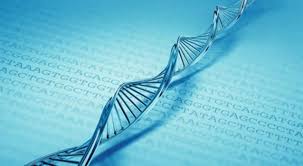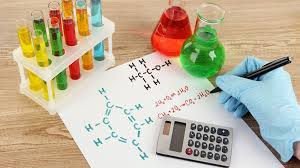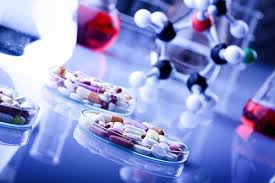
Knowledge of Foundation Concepts
Order Instructions:
Assignment Assess your Knowledge of Foundational Concepts
Assess your knowledge of foundational concepts essential to the nursing management of client health by taking the interactive quiz, located in the media “Arterial Blood Gas Interpretation.” http://lc.gcumedia.com/zwebassets/courseMaterialPages/nrs410v_self-assessment-v1.1.php
The quiz is designed as a tool for self-assessment. When you encounter questions that seem vaguely familiar, click on the media’s study materials, which are organized by topic (e.g., anatomy, biology, chemistry, pharmacology). This media will serve as a refresher for the concepts that build upon one another in nursing practice.
You will have the opportunity to retake the quiz until you achieve a passing score of 100%.
Once completed, please save your results and submit to the instructor.
SAMPLE ANSWERS
Knowledge of Foundation Concepts
Student ADA Version
of the Arterial Blood Gas Interpretation Pre-Assessment
Anatomy
Backward effects of left-sided heart failure include:
- Pulmonary congestion
- Jugular vein distention
- Dependent edema in the legs
- Bounding pulses
Anatomy
In performing a physical assessment, the nurse notes the patient has a “barrel” configuration to the chest. This is a consequence of:
- Reduced intrapleural pressures
- Bronchial airway expansion
- Increased vital capacity
- Increased residual lung volume
Student ADA Version
of the Arterial Blood Gas Interpretation Pre-Assessment
Anatomy
Backward effects of left-sided heart failure include:
- Pulmonary congestion
- Jugular vein distention
- Dependent edema in the legs
- Bounding pulses
Anatomy
In performing a physical assessment, the nurse notes the patient has a “barrel” configuration to the chest. This is a consequence of:
- Reduced intrapleural pressures
- Bronchial airway expansion
- Increased vital capacity
- Increased residual lung volume
Anatomy
Ausculation of the chest reveals bilateral fine crackles in the bases bilaterally, indicating:
- Right-sided heart failure
- Left-sided heart failure
- Pneumonia
- Acute respiratory distress syndrome
Biology
The signs and symptoms of anemia are all related to what common pathophysiologic feature of the condition?
- Increased oxygen consumption by tissues
- Decreased blood oxygen content
- Vasodilation
- A shift in the oxyhemoglobin dissociation curve
Biology
In addition to hypertension, preeclampsia is characterized by:
- Nausea and vomiting
- Fatigue and lower back pain
- Protein in the urine and edema
- Retinal changes and rates in the lungs
Biology
Common manifestations of bacterial pneumonia include all of the following except:
- Fever
- Productive Cough
- Tachypnea
- Hyperinflation
Biology
Closed drainage systems work to re-expand a lung after pneumothorax by:
- Re-establishing the normal negative intrapleural pressure.
- Creating a positive pressure in the pleural space
- Removing excess fluid from the pleural space so that there is room for lung expansion.
- Pulling oxygen into distal air sacs to re-expand lung tissue
Biology
Patients with chronic renal failure usually exhibit:
- Bradycardia
- Hypokalemia
- Hypocalcemia
- Hematomas
Biology
The diet of a patient in end-stage kidney disease is restricted in all of the following except:
- Fluid
- Potassium
- Protein
- Calories
Anatomy
Which of the following is true of the biological functions of progesterone?
- Progesterone is the most important hormone associated with pregnancy.
- Progesterone directs male sexual characteristics.
- Levels of progesterone increases if the egg is not fertilized.
- Levels of progesterone remain stable if the egg is not fertilized.
Anatomy
Which of the following is true of the biological functions of testosterone?
- Testosterone is not secreted by the ovaries.
- Testosterone is needed for development of female secondary sexual characteristics.
- Testosterone stimulates ovulation.
- Testosterone is needed for development of male secondary sexual characteristics.
Anatomy
Which of the following is true of the biological functions of estrone?
- Estrone is required for proper development of male secondary sexual characteristics.
- Level of estrogen degreases if the egg is not fertilized.
- Estrone is required for proper development of female secondary sexual characteristics.
- Estrone affects only the reproductive organs.
Biology
What is the function of hemoglobin?
- Hemoglobin is the protein in red blood cells that is responsible for carrying oxygen to the cells of the body.
- Hemoglobin is a lipid in red blood cells that is responsible for carrying oxygen to the cells of the body.
- Hemoglobin is a protein in white blood cells that is responsible for carrying oxygen to the cells of the body.
- Hemoglobin is a protein in red blood cells that is not responsible for carrying carbon dioxide to the cells of the body.
Biology
Why is heat an effective means of sterilization?
- Heat is an effective means of sterilization because it destroys the proteins of microbial lifeforms, including fungi, bacteria, and viruses.
- Heat is an effective means of sterilization because it destroys the proteins of anaerobic microbial lifeforms, including fungi, bacteria, and viruses.
- Heat is an effective means of sterilization because it destroys the lipids of microbial lifeforms, including fungi, bacteria, and viruses.
- Both (B) and (C).
Chemistry:
List the enzymes whose levels are elevated in the blood serum following an MI.
- CPK, LDH, AST, and SGOT
- LDH, AST, and SGOT
- CRE, AST, and ALT
- None of the above
Chemistry
What is the physiological function of gluconeogenesis?
- Gluconeogenesis is production of glucose from noncarbohydrate molecules in times when blood glucose levels are low. This ensures proper function of brain and red blood cells, which only use glucose as fuel.
- Gluconeogenesis is production of glucose from noncarbohydrate molecules in times when blood glucose levels are high. This ensures proper function of brain and white blood cells, which only use glucose as fuel.
- Gluconeogenesis is production of glucose from carbohydrate molecules in times when blood glucose levels are low. This ensures proper function of brain and red blood cells, which only use glucose as fuel.
- None of the above
Chemistry
What effect does glycogen metabolism have on glucose levels?
- Glycogen metabolism traps glucose within liver cells and increases storage of glucose in the form of glycogen. These processes decrease blood glucose levels.
- Glycogen metabolism traps glucose within liver cells and increases storage of glucose in the form of glycogen. These processes increase blood glucose levels.
- Glycogen metabolism releases glucose within liver cells and increases storage of glucose in the form of glycogen. These processes decrease blood glucose levels.
- None of the above
Chemistry
Carbon monoxide binds tightly to the heme groups of hemoglobin and myoglobin. How does this affinity reflect the toxicity of carbon monoxide?
- Since carbon monoxide binds the heme groups of hemoglobin, it is easily removed or replaced by oxygen. As a result, the effects of oxygen enhancement result in what divers call the “bends.”
- Because carbon monoxide binds the heme groups of hemoglobin, it is easily removed or replaced by oxygen. As a result, the effects of oxygen deprivation result in suffocation.
- Because carbon monoxide binds tightly to the heme groups of hemoglobin, it is not easily removed or replaced by oxygen. As a result, the effects of oxygen deprivation result in suffocation.
- None of the above
Pathophysiology
Which of the following may be a reason to order an ABG on a patient?
- The patient suddenly develops shortness of breath
- An asthmatic is starting to show signs of tiring
- A diabetic has developed Kussmaul’s respirations
- All of the above
Pharmacology
How do sulfa drugs selectively kill bacteria while causing no harm to humans?
- Folic acid is a vitamin required for the synthesis of a coenzyme needed to make the amino acid methionine and the purine and pyrimidine nitrogenious bases for DNA and RNA and folic acid is produced by humans.
- Sulfa drug binds to the enzyme, no product is formed, folic acid is made and the biosynthesis of methionine and nitrogenous bases increases.
- Humans are not harmed because they do not synthesize their own folic acid. It is obtained in the diet.
- None of the above
Pharmacology
What occurs when glycogen metabolism is stimulated by insulin?
- Insulin stimulates glycogen synthase, the first enzyme in glycogen synthesis.
- Insulin stimulates glycogen synthase, the first enzyme in glycogen synthesis. It also stimulates removal of glucose from the bloodstream into cells and phosphorylation of glucose by the enzyme glucokinase.
- Insulin stimulates glycogen synthase, the first enzyme in glycogen synthesis. It also stimulates uptake of glucose from the bloodstream into cells and phosphorylation of glucose by the enzyme glucokinase.
- All of the above
Pharmacology
What is the medical application of cortisone? Cortisone is used to treat:
- Rheumatoid arthritis, asthma, gastrointestinal disorders, and a variety of skin conditions.
- Kidney disease, high blood pressure, and osteoporosis.
- Muscle disorders, tuberculosis, and thyroid disorder.
- All of the above
Anatomy
Oxygen saturation is likely to be lowest when an asthmatic with a diagnosis of pneumonia is positioned:
- In a high Fowler position
- Lying on the left side
- Lying on the right side
- Lying supine with the head of the bed flat
Chemistry
Laboratory test results indicative of thrombocytopenia, in addition to a low platelet count, would be:
- Increased PT
- Prolonged bleeding time and poor clot retraction.
- Increased aPTT
- Decreased RBC count.
Pharmacology
The purposes of epinephrine injection include all of the following except:
- Stabilizing mast cell membranes.
- Relaxing bronchial smooth muscle.
- Supporting arterial blood pressure.
- Blocking histamine receptors.
Pharmacology
Therapeutic interventions focused on increasing the oxygen supplied to the heart and decreasing the heart’s demand for oxygen include:
- Antiplatelet drugs
- Anticoagulants
- Morphine sulphate
- Thrombolytic drugs
Pharmacology
An intervention that would contribute toward the healing of a peptic ulcer is:
- Steroid administration
- Blocking or neutralizing of acid secretion
- Surgical removal of the ulcer
- Intravenous nutritional support
Pharmacology
Aspirin and NSAIDs are causative factors for the development of peptic ulcer disease because they:
- Increase acid secretion
- Allow proliferation of H. pylori
- Damage the mucosal barrier
- Alter platelet aggregation
Pharmacology
Your patient is interested in trying medication to improve low mood/depression. All of the following medications might be appropriate except:
- Selective serotonin reuptake inhibitors
- Amitriptyline
- Serotonin and norepinephrine reuptake inhibitors
- Benzodiazepines
Anatomy
Ausculation of the chest reveals bilateral fine crackles in the bases bilaterally, indicating:
- Right-sided heart failure
- Left-sided heart failure
- Pneumonia
- Acute respiratory distress syndrome
Biology
The signs and symptoms of anemia are all related to what common pathophysiologic feature of the condition?
- Increased oxygen consumption by tissues
- Decreased blood oxygen content
- Vasodilation
- A shift in the oxyhemoglobin dissociation curve
Biology
In addition to hypertension, preeclampsia is characterized by:
- Nausea and vomiting
- Fatigue and lower back pain
- Protein in the urine and edema
- Retinal changes and rates in the lungs
Biology
Common manifestations of bacterial pneumonia include all of the following except:
- Fever
- Productive Cough
- Tachypnea
- Hyperinflation
Biology
Closed drainage systems work to re-expand a lung after pneumothorax by:
- Re-establishing the normal negative intrapleural pressure.
- Creating a positive pressure in the pleural space
- Removing excess fluid from the pleural space so that there is room for lung expansion.
- Pulling oxygen into distal air sacs to re-expand lung tissue
Biology
Patients with chronic renal failure usually exhibit:
- Bradycardia
- Hypokalemia
- Hypocalcemia
- Hematomas
Biology
The diet of a patient in end-stage kidney disease is restricted in all of the following except:
- Fluid
- Potassium
- Protein
- Calories
Anatomy
Which of the following is true of the biological functions of progesterone?
- Progesterone is the most important hormone associated with pregnancy.
- Progesterone directs male sexual characteristics.
- Levels of progesterone increases if the egg is not fertilized.
- Levels of progesterone remain stable if the egg is not fertilized.
Anatomy
Which of the following is true of the biological functions of testosterone?
- Testosterone is not secreted by the ovaries.
- Testosterone is needed for development of female secondary sexual characteristics.
- Testosterone stimulates ovulation.
- Testosterone is needed for development of male secondary sexual characteristics.
Anatomy
Which of the following is true of the biological functions of estrone?
- Estrone is required for proper development of male secondary sexual characteristics.
- Level of estrogen degreases if the egg is not fertilized.
- Estrone is required for proper development of female secondary sexual characteristics.
- Estrone affects only the reproductive organs.
Biology
What is the function of hemoglobin?
- Hemoglobin is the protein in red blood cells that is responsible for carrying oxygen to the cells of the body.
- Hemoglobin is a lipid in red blood cells that is responsible for carrying oxygen to the cells of the body.
- Hemoglobin is a protein in white blood cells that is responsible for carrying oxygen to the cells of the body.
- Hemoglobin is a protein in red blood cells that is not responsible for carrying carbon dioxide to the cells of the body.
Biology
Why is heat an effective means of sterilization?
- Heat is an effective means of sterilization because it destroys the proteins of microbial lifeforms, including fungi, bacteria, and viruses.
- Heat is an effective means of sterilization because it destroys the proteins of anaerobic microbial lifeforms, including fungi, bacteria, and viruses.
- Heat is an effective means of sterilization because it destroys the lipids of microbial lifeforms, including fungi, bacteria, and viruses.
- Both (B) and (C).
Chemistry:
List the enzymes whose levels are elevated in the blood serum following an MI.
- CPK, LDH, AST, and SGOT
- LDH, AST, and SGOT
- CRE, AST, and ALT
- None of the above
Chemistry
What is the physiological function of gluconeogenesis?
- Gluconeogenesis is production of glucose from noncarbohydrate molecules in times when blood glucose levels are low. This ensures proper function of brain and red blood cells, which only use glucose as fuel.
- Gluconeogenesis is production of glucose from noncarbohydrate molecules in times when blood glucose levels are high. This ensures proper function of brain and white blood cells, which only use glucose as fuel.
- Gluconeogenesis is production of glucose from carbohydrate molecules in times when blood glucose levels are low. This ensures proper function of brain and red blood cells, which only use glucose as fuel.
- None of the above
Chemistry
What effect does glycogen metabolism have on glucose levels?
- Glycogen metabolism traps glucose within liver cells and increases storage of glucose in the form of glycogen. These processes decrease blood glucose levels.
- Glycogen metabolism traps glucose within liver cells and increases storage of glucose in the form of glycogen. These processes increase blood glucose levels.
- Glycogen metabolism releases glucose within liver cells and increases storage of glucose in the form of glycogen. These processes decrease blood glucose levels.
- None of the above
Chemistry
Carbon monoxide binds tightly to the heme groups of hemoglobin and myoglobin. How does this affinity reflect the toxicity of carbon monoxide?
- Since carbon monoxide binds the heme groups of hemoglobin, it is easily removed or replaced by oxygen. As a result, the effects of oxygen enhancement result in what divers call the “bends.”
- Because carbon monoxide binds the heme groups of hemoglobin, it is easily removed or replaced by oxygen. As a result, the effects of oxygen deprivation result in suffocation.
- Because carbon monoxide binds tightly to the heme groups of hemoglobin, it is not easily removed or replaced by oxygen. As a result, the effects of oxygen deprivation result in suffocation.
- None of the above
Pathophysiology
Which of the following may be a reason to order an ABG on a patient?
- The patient suddenly develops shortness of breath
- An asthmatic is starting to show signs of tiring
- A diabetic has developed Kussmaul’s respirations
- All of the above
Pharmacology
How do sulfa drugs selectively kill bacteria while causing no harm to humans?
- Folic acid is a vitamin required for the synthesis of a coenzyme needed to make the amino acid methionine and the purine and pyrimidine nitrogenious bases for DNA and RNA and folic acid is produced by humans.
- Sulfa drug binds to the enzyme, no product is formed, folic acid is made and the biosynthesis of methionine and nitrogenous bases increases.
- Humans are not harmed because they do not synthesize their own folic acid. It is obtained in the diet.
- None of the above
Pharmacology
What occurs when glycogen metabolism is stimulated by insulin?
- Insulin stimulates glycogen synthase, the first enzyme in glycogen synthesis.
- Insulin stimulates glycogen synthase, the first enzyme in glycogen synthesis. It also stimulates removal of glucose from the bloodstream into cells and phosphorylation of glucose by the enzyme glucokinase.
- Insulin stimulates glycogen synthase, the first enzyme in glycogen synthesis. It also stimulates uptake of glucose from the bloodstream into cells and phosphorylation of glucose by the enzyme glucokinase.
- All of the above
Pharmacology
What is the medical application of cortisone? Cortisone is used to treat:
- Rheumatoid arthritis, asthma, gastrointestinal disorders, and a variety of skin conditions.
- Kidney disease, high blood pressure, and osteoporosis.
- Muscle disorders, tuberculosis, and thyroid disorder.
- All of the above
Anatomy
Oxygen saturation is likely to be lowest when an asthmatic with a diagnosis of pneumonia is positioned:
- In a high Fowler position
- Lying on the left side
- Lying on the right side
- Lying supine with the head of the bed flat
Chemistry
Laboratory test results indicative of thrombocytopenia, in addition to a low platelet count, would be:
- Increased PT
- Prolonged bleeding time and poor clot retraction.
- Increased aPTT
- Decreased RBC count.
Pharmacology
The purposes of epinephrine injection include all of the following except:
- Stabilizing mast cell membranes.
- Relaxing bronchial smooth muscle.
- Supporting arterial blood pressure.
- Blocking histamine receptors.
Pharmacology
Therapeutic interventions focused on increasing the oxygen supplied to the heart and decreasing the heart’s demand for oxygen include:
- Antiplatelet drugs
- Anticoagulants
- Morphine sulphate
- Thrombolytic drugs
Pharmacology
An intervention that would contribute toward the healing of a peptic ulcer is:
- Steroid administration
- Blocking or neutralizing of acid secretion
- Surgical removal of the ulcer
- Intravenous nutritional support
Pharmacology
Aspirin and NSAIDs are causative factors for the development of peptic ulcer disease because they:
- Increase acid secretion
- Allow proliferation of H. pylori
- Damage the mucosal barrier
- Alter platelet aggregation
Pharmacology
Your patient is interested in trying medication to improve low mood/depression. All of the following medications might be appropriate except:
- Selective serotonin reuptake inhibitors
- Amitriptyline
- Serotonin and norepinephrine reuptake inhibitors
- Benzodiazepines
We can write this or a similar paper for you! Simply fill the order form!







